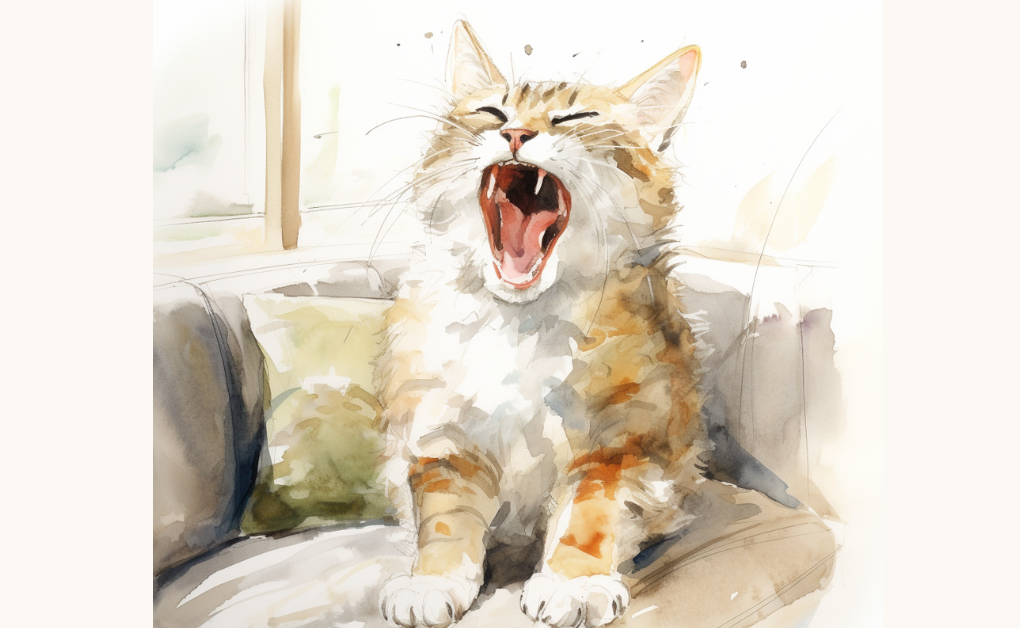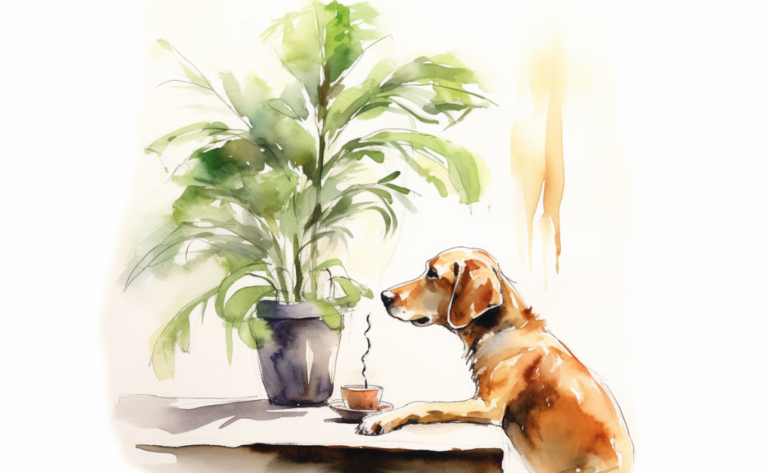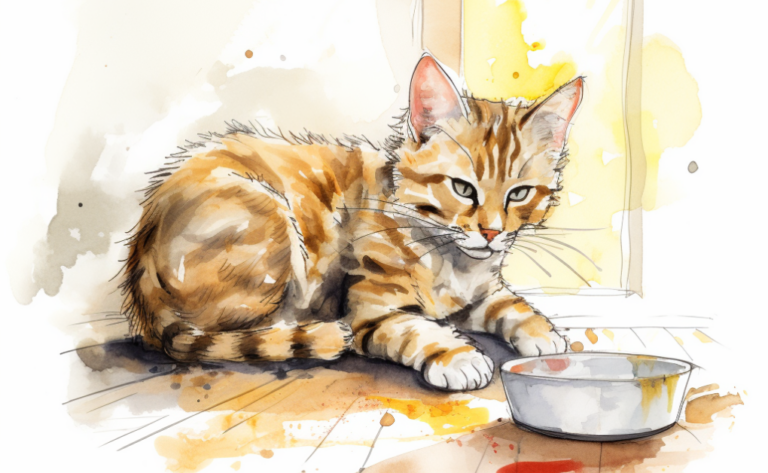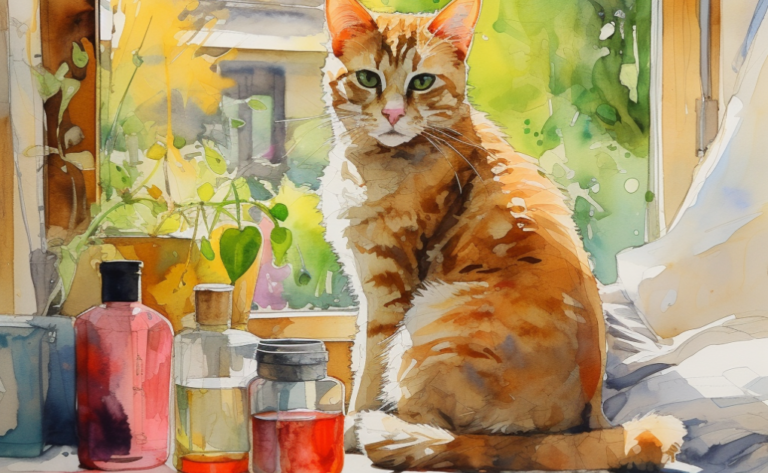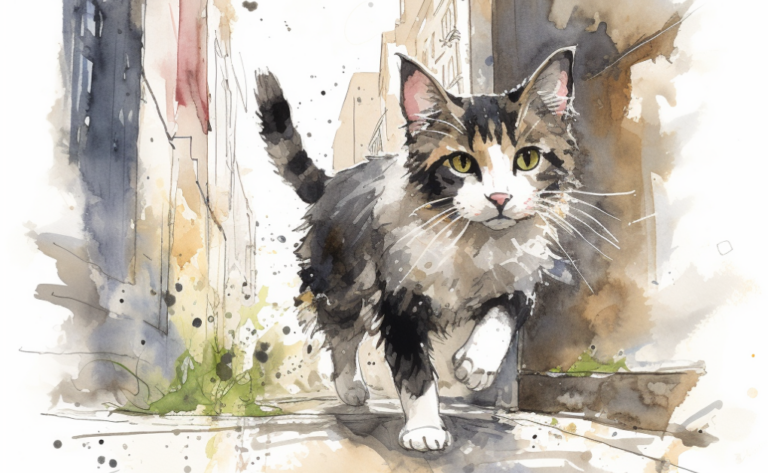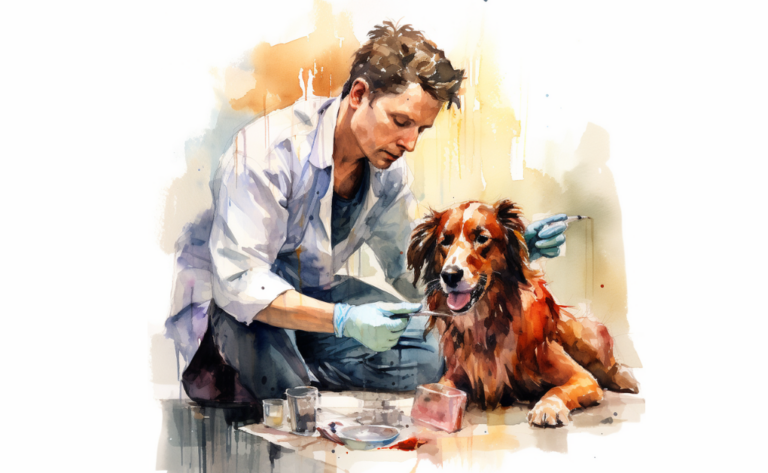What is Stomatitis in Cats?
What is it?
How is it Treated?
Breed Predispositions
Siamese Himalayan Persian Abyssinian Devon Rex Oriental Shorthair Burmese Scottish Fold
Introduction
It was a typical evening for Sarah, snuggling up on the couch with her furry companion, Luna, when she noticed something unusual. Luna seemed to be pawing at her mouth and drooling more than usual. Concerned about her feline friend’s wellbeing, Sarah scheduled a visit to the veterinarian. After a thorough examination, the vet diagnosed Luna with stomatitis, an inflammatory condition affecting a cat’s mouth. Suddenly faced with a myriad of questions and concerns, Sarah embarked on a mission to learn everything she could about stomatitis in cats.
Stomatitis in felines is a medical condition characterized by tissue swelling in the mouth. It arises from specific bodily mechanisms that cause an abnormal immune response or an overly intense inflammatory reaction. Stomatitis can impact different mouth areas, including the gums, tongue, and throat. Around 10% of cats experience feline stomatitis. Stomatitis disrupts the normal balance between the immune system and the microorganisms in the mouth. This disruption triggers a chain reaction of inflammation that leads to swelling and ulcers in the mouth. Understanding why stomatitis occurs is crucial in identifying the condition and promptly seeking appropriate veterinary treatment.
Causes of Stomatitis in Cats
Alternatively, cats commonly exhibit caudal stomatitis or mouth and gum tissue inflammation. The triggers of this disease can be manifold.
Dental Disease
Dental disease is among the chief culprits. As food residue, saliva, and bacteria accumulate on the cat’s teeth, they form a plaque layer. Without timely intervention, the plaque hardens into tartar, leading to gingivitis or inflammation of the gingiva (gums).
As this inflammation persists, it develops into stomatitis, a heightened form of oral inflammation encompassing the gums and the mouth’s other tissues. This condition often causes pain, difficulty in eating, bad breath, and changes in behavior among cats.

Viral Infections
Stomatitis may also be a consequence of specific viral infections. For instance, Feline Calicivirus, a common respiratory virus found in small animals such as cats, can lead to the development of ulcers in the mouth and stomatitis.
Additional viruses, such as Feline Immunodeficiency Virus (FIV) and Feline Leukemia Virus (FeLV), can weaken the immune system, increasing the cat’s susceptibility to oral infections and inflammation.
Immune-Mediated Disease
In certain instances, an immune-mediated disease can incite an inflammatory reaction against the cat’s oral tissues, which the immune system erroneously perceives as foreign. This leads to lymphocytic plasmacytic stomatitis, an intense inflammation condition in the mouth and gums of cats. The specific cause behind this immune response remains largely unclear, but it is assumed to be a reaction to bacteria in dental plaque.
Other Infections
Stomatitis can also arise from alternative infections. Localized inflammation in the mouth can be induced by bacterial infections, which subsequently result in stomatitis. Several types of bacteria can thrive in the oral cavity, particularly in the presence of dental ailments. Furthermore, oral inflammation can be provoked by fungal infections caused by Candida species, particularly in felines with compromised immune systems.
Foreign Bodies
Foreign bodies are another potential cause. Given their curious nature, cats may chew or ingest non-edible objects. If these foreign bodies become lodged in the mouth or throat, they can result in irritation or inflammation, manifesting in dental disease as stomatitis. The foreign bodies can range from a simple piece of string to a small toy or bone.
Cancer
Although less prevalent, oral cancer, such as squamous cell carcinoma, can bring about stomatitis symptoms. This type of cancer can provoke significant oral pain and inflammation.
Allergies
Allergies can also lead to stomatitis. A cat’s allergic reaction to a specific food, medication, or material may lead to this oral inflammation.
Genetics
Finally, genetics play a role in developing stomatitis or feline chronic gingivostomatitis, as it is sometimes called. Cat breeds like Abyssinian, Siamese, and Maine Coon appear to be more prone to this disease, which indicates a possible genetic link. However, these genetic factors contributing to stomatitis still need to be fully understood and remain an active area of research. In most cats, determining the exact cause of stomatitis, or caudal mucositis as it is also known, requires careful examination and ongoing study.
Symptoms of Feline Stomatitis
Feline stomatitis is painful for cats, and the signs can vary widely. Cats may exhibit
- bad breath (halitosis), a common symptom
- drool excessively, sometimes mixed with blood
- difficulties during meals or a complete refusal to eat, leading to noticeable weight loss.
The animal’s dental health may also be compromised with red, swollen gums that frequently bleed. Cats may also develop painful ulcers in the mouth, a clear sign of stomatitis. Another symptom, pawing at the mouth or face, can indicate mouth pain, a critical aspect of feline stomatitis.
The condition can cause significant changes in behavior as well. Cats may become increasingly aggressive or exhibit signs of withdrawal. Additionally, they may show a reduced interest in grooming, leading to a deteriorated coat condition.
Cats suffering from stomatitis may also vocalize or show discomfort when performing normal activities such as yawning, eating, or grooming. Recognizing these signs of stomatitis in cats is crucial for early intervention and effective treatment.
If you observe any of these symptoms in your cat, it’s essential to consult with a professional in veterinary medicine. They can properly diagnose and formulate a suitable treatment plan, including specialized animal dental care. It’s vital to address the symptoms promptly to alleviate the pain and discomfort associated with stomatitis in cats.
Diagnosing Stomatitis in Cats
Diagnosing feline stomatitis involves several stages, including gathering an in-depth medical history, observing clinical signs, and conducting specific diagnostic tests. The process is comprehensive, as detailed below:
Physical Examination
A thorough physical examination is the initial step in diagnosing stomatitis. This involves an oral exam to inspect for signs of inflammation in the mouth, such as redness, swelling, ulcers, or other abnormalities. However, some cats may resist a full oral examination due to the discomfort and pain caused by the condition.
Blood Tests
Blood tests, such as a complete blood count (CBC) and serum biochemistry panel, might be carried out to assess the cat’s overall health and check for indications of infection, inflammation, or other chronic conditions. These tests can also help exclude systemic diseases that might be causing or contributing to oral inflammation.
Viral Testing
Viral testing might be necessary, particularly in cats not subjected to regular exams, as specific viral infections like Feline Immunodeficiency Virus (FIV) and Feline Leukemia Virus (FeLV) can exacerbate stomatitis.
Dental X-Rays
Dental radiographs or X-rays play a crucial role in evaluating the condition of teeth and the underlying bone beneath the gum line. Through these images, dental issues that could lead to stomatitis, such as tooth resorption, periodontal disease, or abscesses in the root of a tooth, can be detected.
Biopsy
Biopsy could be suggested if the vet cannot determine the inflammation’s origin or if there’s concern about possible cancer. This process involves extracting a small tissue sample from the affected mouth area for laboratory analysis.
Bacterial Culture and Sensitivity
In cases where a bacterial infection is suspected of contributing to the stomatitis, bacterial culture and sensitivity testing might be undertaken. Swabbing the oral cavity can aid in identifying the specific bacteria involved and ascertain the most effective antibiotics for medical management.
Treatment for Stomatitis in Cats
Treatment of feline stomatitis can be complex, typically requiring an integrated approach to manage the severity of the disease. Here are some of the prevalent treatment options:
Dental Cleaning and Extractions:
Research indicates that most cats who undergo partial or complete tooth extraction procedures tend to recover from their dental disease fully. In cases where dental disease is commonly a factor in stomatitis, the initial course of action typically involves a comprehensive dental cleaning performed under general anesthesia. This procedure effectively eliminates plaque and tartar buildup that contribute to inflammation within the mouth.
Occasionally, the veterinarian may recommend tooth removal, including surgical extraction of an affected tooth. Cats experiencing severe stomatitis often display an exaggerated immune response to the bacteria in plaque on their teeth, and eliminating these teeth can help mitigate inflammation. Complete teeth extraction may be necessary for more severe instances, significantly reducing symptoms in many feline patients.
Medications:
Several different types of medications can be used to manage stomatitis:

A range of medications can be employed to manage stomatitis:
- Antibiotics can help to control secondary bacterial infections in the mouth. The choice of antibiotic may be influenced by a culture and sensitivity test.
- Anti-inflammatory drugs like non-steroidal anti-inflammatory drugs (NSAIDs) or corticosteroids can help lessen inflammation and relieve pain. However, the long-term use of these medications may lead to side effects, necessitating regular vet monitoring.
- Immunosuppressive drugs like cyclosporine may be used if stomatitis is believed to be immune-mediated.
- Pain control is essential to managing stomatitis, given the discomfort it can cause. Pain medication can enhance your cat’s comfort level and improve their eating habits.
Diet and Nutrition:
It is essential to uphold a delectable and nutritionally sound diet for the cat’s holistic well-being. Wet food is frequently preferred by cats suffering from stomatitis due to its ease of consumption. A feeding tube may become requisite if the cat’s eating habits are insufficient.
Regular Veterinary Follow-ups:
Since stomatitis is a chronic condition, regular follow-up visits to the vet are necessary to monitor the cat’s progress and adjust treatment as required.
It’s vital to remember that the treatment of feline stomatitis is generally directed at managing symptoms and enhancing the quality of life, not curing the disease. In many cases, stomatitis can be a long-term condition needing consistent management, even within the comfort of the pet’s home.
Recovery and Management for Stomatitis in Cats
Recovery from Stomatitis:
The length of time it takes for a cat to recover from stomatitis can vary based on the seriousness of the issue and the cat’s overall health. If the swelling is caused by a specific and treatable condition such as dental disease, the cat may experience significant improvement following a dental cleaning and removed of affected teeth. However, if the swelling results from an immune-mediated response or viral infection, it may take longer to see progress.
Following a dental procedure, the cat may initially experience discomfort and pain. Proper pain management will be crucial during the recovery process. With the help of pain medications, the cat’s comfort should gradually improve, and it will eventually regain its ability to eat normally.
Long-Term Management:
Stomatitis is often a chronic condition that might require ongoing treatment to manage symptoms. Long-term management might include:
- Medication: Some cats may require long-term medication to control inflammation and manage pain. It’s essential to give these medications as the veterinarian prescribes and monitors for potential side effects.
- Diet: Feeding soft, wet food can help make eating more comfortable for cats with stomatitis. Some cats may benefit from a hypoallergenic diet if food allergies contribute to inflammation.
- Oral Hygiene: Regular oral hygiene, including tooth brushing or using oral rinses or gels, can help reduce plaque and bacteria in the mouth and minimize inflammation. However, oral hygiene can be difficult in cats with severe stomatitis due to oral pain and sensitivity.
- Regular Vet Check-ups: Regular veterinary examinations are of utmost importance to continually assess an animal’s health and make any necessary modifications to its treatment regimen.
Ensuring adequate maintenance for cats affected by stomatitis will enable them to lead a content existence, even in cases where fractured teeth might be a concern. Nevertheless, certain instances may prove more vexing to handle than others, thus requiring a steadfast commitment to continued care. As an owner of a beloved companion, your veterinarian shall serve as your guiding force in ensuring optimal well-being for your cherished pet.
Prevention of Feline Stomatitis
While completely preventing stomatitis in cats might not always be feasible, particularly as the specific cause often remains uncertain and may relate to the unique immune response of individual cats, certain tactics can aid in diminishing a cat’s risk:
Dental Hygiene
Good dental hygiene is crucial for oral health and can assist in preventing numerous oral conditions, including stomatitis. This could involve regular at-home dental care, including brushing your cat’s teeth and offering food or treats that support dental health. While some cats might resist getting their teeth brushed, utilizing mouth rinses or gels can aid in minimizing plaque and bacterial buildup in the mouth.
Routine Veterinary Check-ups
Regular veterinary check-ups are indispensable, generally recommended annually for young, healthy cats and more frequently for older cats or those with health issues. During these visits, the vet can examine your cat’s mouth, including checking teeth and the back of the mouth for early indications of stomatitis or other oral diseases. Prompt detection and treatment of oral disease can inhibit its progression to stomatitis.
Professional Dental Cleanings
Professional dental cleanings performed under anesthesia can support oral health and deter disease. These cleanings’ frequency will depend on your cat’s risk factors and should be discussed with your veterinarian. Some cats will require more frequent cleanings.
Balanced Diet
A balanced, high-quality diet can bolster your cat’s overall health and support optimal immune system function.
Avoid Viral Exposure
Specific viral infections (like FIV and FeLV) can exacerbate stomatitis, so mitigating exposure to these viruses can help reduce risk. This could involve keeping your cat indoors, regular testing for these viruses, and adhering to veterinarian-recommended vaccination schedules.
Regular Vaccinations
Maintaining up-to-date vaccinations can help shield your cat from certain viral infections that impact oral health.
Remember, working closely with your vet and adhering to their recommendations is crucial to ensure your cat’s optimal health.
Frequently Asked Questions
Disclaimer: The information provided on this veterinary website is intended for general educational purposes only and should not be considered as a substitute for professional veterinary advice, diagnosis, or treatment. Always consult a licensed veterinarian for any concerns or questions regarding the health and well-being of your pet. This website does not claim to cover every possible situation or provide exhaustive knowledge on the subjects presented. The owners and contributors of this website are not responsible for any harm or loss that may result from the use or misuse of the information provided herein.

